Search
Remove Ads
Advertisement
Summary 
Loading AI-generated summary based on World History Encyclopedia articles ...
Search Results
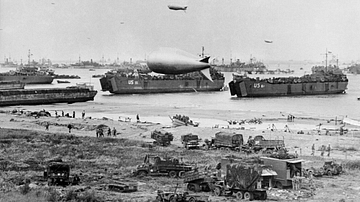
Collection
The Normandy Landings
In this collection of resources, we look at the events of D-Day, 6 June 1944, when the Allies stormed the Normandy beaches in France on the first day of a campaign to free Western Europe from occupation by Nazi Germany during the Second World...

Image
Pegasus Bridge, Normandy Landings
A photograph of Pegasus Bridge on the Caen Canal after its capture on D-Day 6 June 1944 by British paratroopers. Control of the bridge was vital to the eastern flank of the Allied Normandy Landings, preventing German panzer divisions from...

Image
Armoured Column, Normandy Landings
A photograph showing a British armoured column moving inland from Gold Beach following the Normandy Landings of D-day 6 June 1944. (Imperial War Museums)

Image
Pursuit Tank, Normandy Landings
A photograph showing a British pursuit tank about to land at Gold Beach the day after D-day 6 June 1944. (Imperial War Museums)

Definition
Rollo of Normandy
Rollo (l. c.860-c.930 CE, r. 911-927 CE) was a Viking chieftain who became the founder and first ruler of the region of Normandy. He converted to Christianity as part of a deal with the Frankish king Charles the Simple (893-923 CE) in 911...
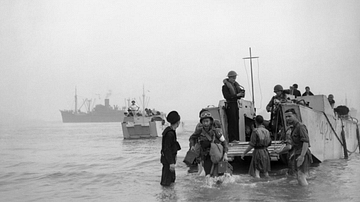
Definition
Operation Torch
Operation Torch (aka the North Africa landings) landed Allied troops in French Morocco and Algeria on 8 November 1942 with the aim of removing German and Italian forces from North Africa. The first jointly-planned Allied operation of the...
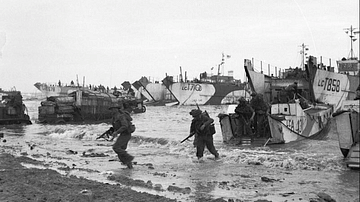
Definition
Gold Beach
Gold Beach was the central of the five Allied D-Day Normandy landings of 6 June 1944. Primarily British units, with massive naval and air support, were set the task of taking the beach, a feat achieved by the end of the day, using a combination...
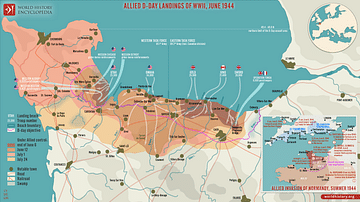
Image
Allied D-Day Landings of WWII, June 1944
The Allied D-Day landings (D-Day is a military term used to designate the day on which a combat operation is scheduled to begin), which took place on June 6, 1944, marked the largest seaborne invasion in history and a pivotal moment in the...
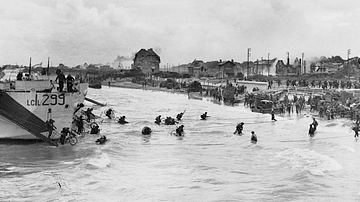
Definition
Juno Beach
Juno Beach was attacked primarily by forces of the 3rd Canadian Infantry Division as part of the Allied D-Day Normandy landings of 6 June 1944. The Canadian troops initially suffered heavy casualties since aerial and naval bombardments had...
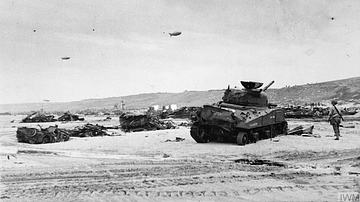
Definition
Omaha Beach
Omaha Beach was one of two beaches attacked by the US armed forces on D-Day, 6 June 1944. Strong German defences on the bluff overlooking the beach made this area the most difficult of the Normandy landings, but by the end of the day, the...